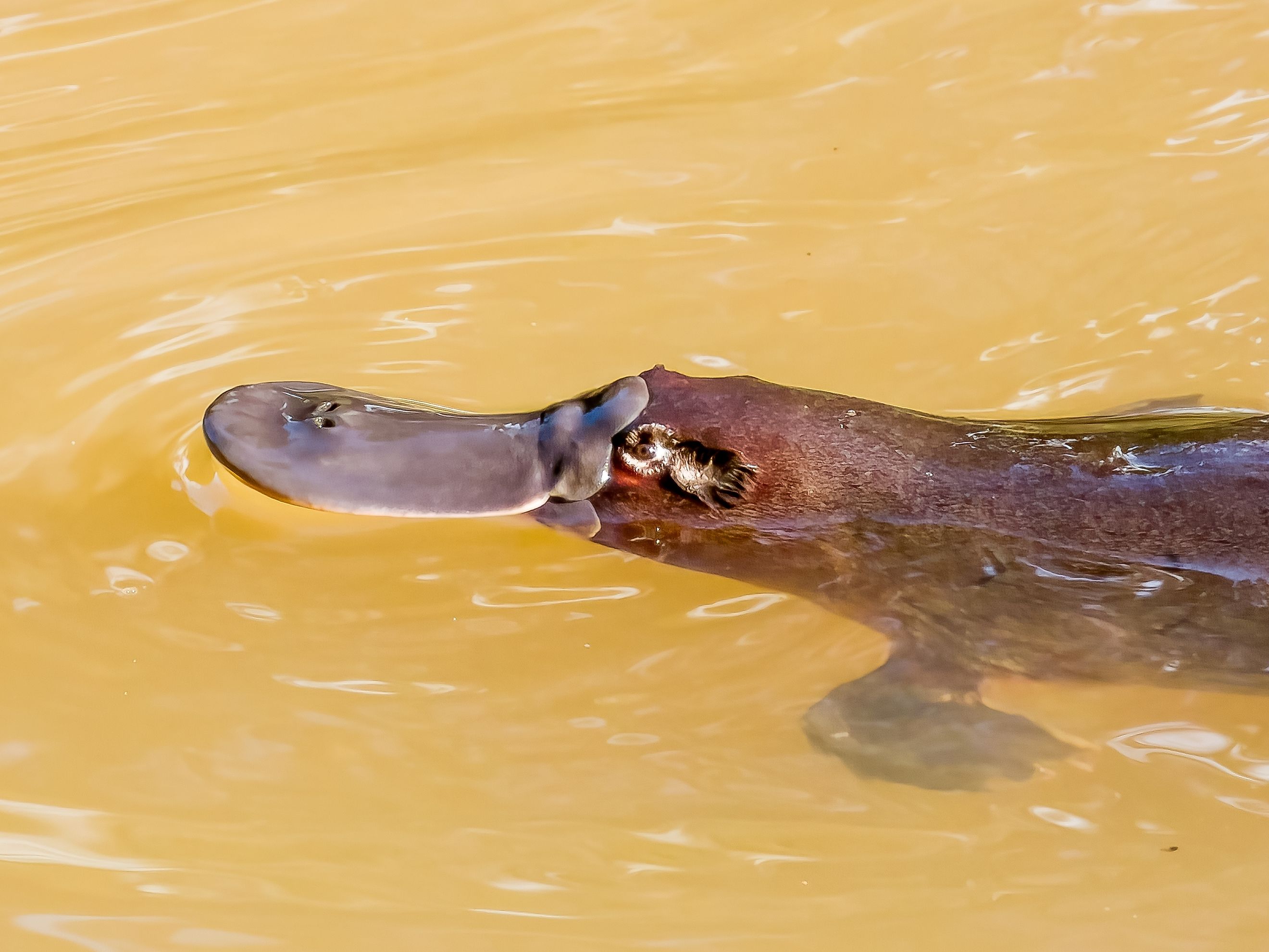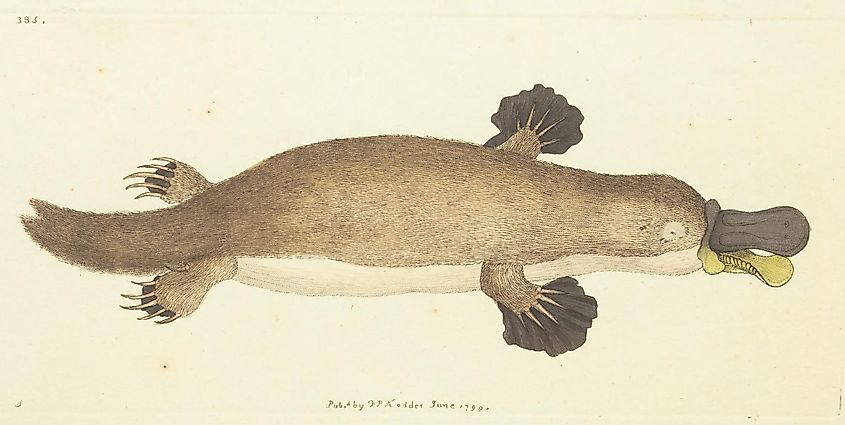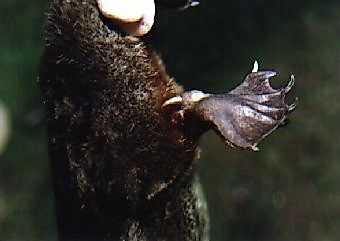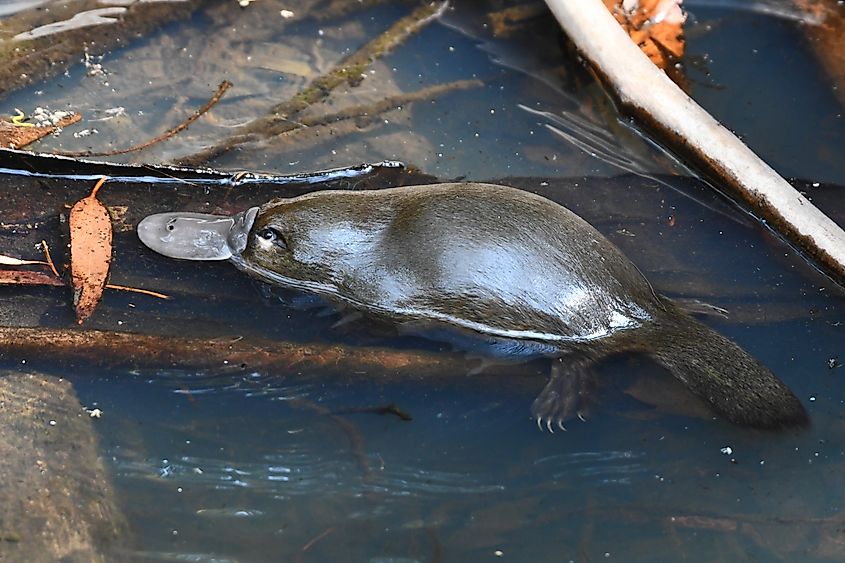
The Venomous Mystery Platypus With Its Toxic Spurs
When British scientists first encountered the platypus in the late 18th century, many believed it was a hoax—perhaps a duck bill sewn onto the body of an otter or mole. Given its bizarre features, that early skepticism is understandable.

The platypus is one of the few mammals that lays eggs, lacks a stomach, and produces venom. Using spurs on its hind legs, it can deliver an excruciatingly painful toxin, particularly potent during the breeding season. This venom, while unusual, has become a fascinating subject of study, both for what it reveals about the platypus and for its rare chemical makeup.
The Background of the Platypus

The platypus is a small, amphibious mammal found only in Australia, known for its distinctive features: a flat, duck-like bill, a beaver-like tail, and otter-like feet. From head to tail, an adult platypus can reach up to 60 centimeters (23.6 inches) in length. Males are generally larger, weighing up to 3 kilograms (6.6 pounds), while females typically weigh up to 1.7 kilograms (3.7 pounds). Their upper fur is dark brown, with a white patch near each eye, while the underside ranges in color from creamy white to rusty red or brassy yellow. The platypus is also one of the few known species to lay eggs, with its eggs reaching 16 to 18 millimeters in length (0.6 to 0.7 inches).
Derived from the Greek words platus (flat) and pous (foot), the name “platypus” literally means 'flat-footed.' On land, it moves somewhat clumsily, walking on its knuckles to avoid damaging the webbing between its toes. The species is most commonly found in freshwater rivers, billabongs, wetlands, and occasionally in brackish estuaries.
Venomous Spurs and Venom

On the heels of its back feet, the male platypus has sharp, spur-like stingers. The spurs of adult males measure between 15 and 18 millimeters in length and are shaped similarly to a dog's canine tooth. In juvenile platypuses, the spurs often appear shorter and thicker than in adult males because they are covered by a thick white layer of keratin, which gradually chips away as the animal matures.
Only mature males produce venom, with production peaking during the breeding season. Many scientists believe the spurs evolved primarily to help males compete for mates, though they may also serve as a secondary defense against predators. This venomous spurring response occurs when a male is stroked or touched between its hind legs on its belly. In reaction, its hind feet turn outward and upward, positioning the spurs erect against the lower limb bones. The platypus then forcefully drives its spurs inward, ejecting a venom that is clear and slightly sticky.
The Effects of Venom

While platypus venom can be fatal to dogs, it does not appear to be lethal to humans or other platypuses. When the platypus’s crural gland releases venom, it contains at least 19 proteins classified into three major toxin types: C-type natriuretic peptides, defensin-like peptides, and nerve growth factor. These proteins are similar to toxin families found in many types of reptile venom. Once the venom enters the body, it disrupts blood flow, damages cell membranes, and interferes with pain regulation. This often results in swelling, nausea, and excruciating pain that can persist for weeks and is unaffected by morphine. Instead, doctors rely on nerve blockers for relief, leading the scientific community to speculate over the venom’s compounds for potential medical applications.
Possible Medical Uses of Platypus Venom

Researchers from the University of Adelaide and Flinders University have found in recent years that platypus venom contains a hormone that could be helpful in treating diabetes. This hormone, known as GLP-1, is also found in humans and other animals and helps regulate blood sugar by promoting insulin release. However, in most animals, it breaks down very quickly. The platypus, on the other hand, produces a longer-lasting variant, which may offer potential benefits for diabetes sufferers.
University researchers decided to investigate platypus venom more deeply, in part because of questions around how the species regulates its insulin. The platypus does not have a functional stomach, suggesting that it may have a unique metabolic control system. More research is needed before the venom could perhaps be used in the future for human treatment.
Final Thoughts
Although scientists have developed a general understanding of the anatomy and function of the platypus’s venomous spurs, much remains unknown, particularly regarding the venom’s potential medical applications. While initial findings suggest that it may be useful for the treatment of diabetes, there is still a long journey to get a drug approved for public use. Regardless, the shift from skepticism over the platypus’s very existence to serious investigation into the biomedical value of its venom marks a remarkable evolution in how this species is understood.











